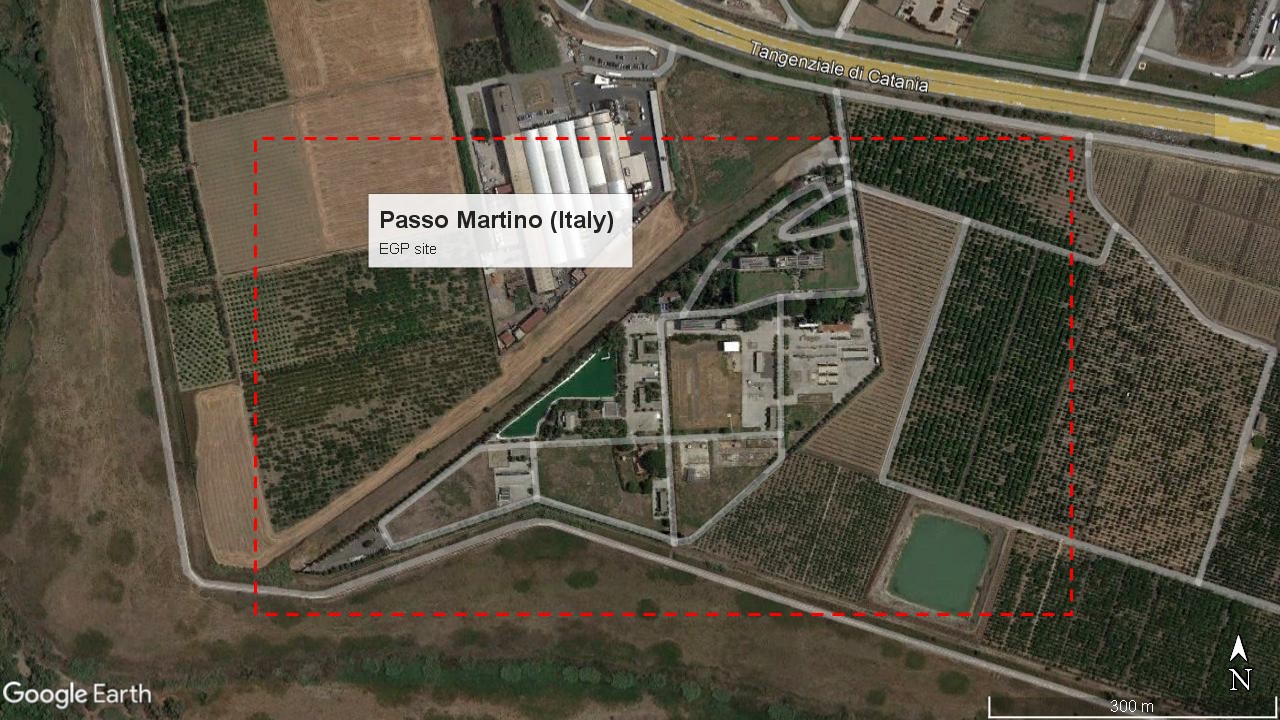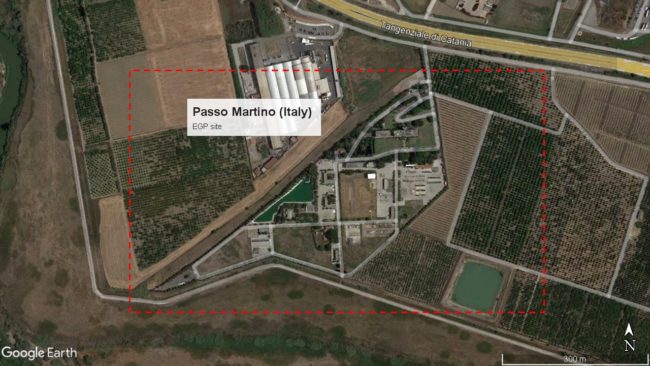The planned photovoltaic (PV) plant was designed to include a total capacity of 250 kW, with an equal split between GOPV modules and 3SUN Commercial modules, each contributing 125 kW.
The installation was intended to be distributed across two primary areas:
- Tracker Area: This section is planned to feature Horizontal Single-Axis Trackers (HSAT) as the support structures for the PV modules.
- Fixed Area: In this area, the modules are to be mounted on tilted fixed structures.
The GOPV modules are proposed to be installed in various configurations, differing in terms of Ground Coverage Ratio (GCR) and the height (or elevation) of the structures.
However, the construction of this 250 kW demonstration plant has not been completed.
At the string level, two outdoor experimental setups were established at two distinct locations: Cadarache and Tuscania. The primary goal of the Cadarache pilot site was to showcase a yield improvement exceeding 30% for the dual-component GOPV module-tracker system compared to the reference monofacial fixed mounting setup. This site aimed to validate the enhanced performance and efficiency of the advanced GOPV technology under real-world conditions.
Meanwhile, the Tuscania site was specifically dedicated to examining the mechanical behavior of various tracker configurations. These configurations integrated a combination of Weathering Steel (WS) and Glass Fiber Reinforced Polymers (GFRP) components, along with GOPV modules and different module fastening solutions. The focus here was on assessing the durability, stability, and overall mechanical integrity of these innovative setups under diverse environmental conditions.
The comprehensive results obtained from both the Cadarache and Tuscania sites have conclusively demonstrated that the developed components, modules, and trackers are highly reliable. These findings underscore the robustness and effectiveness of the new technologies, paving the way for their potential widespread adoption in the field of solar energy.


